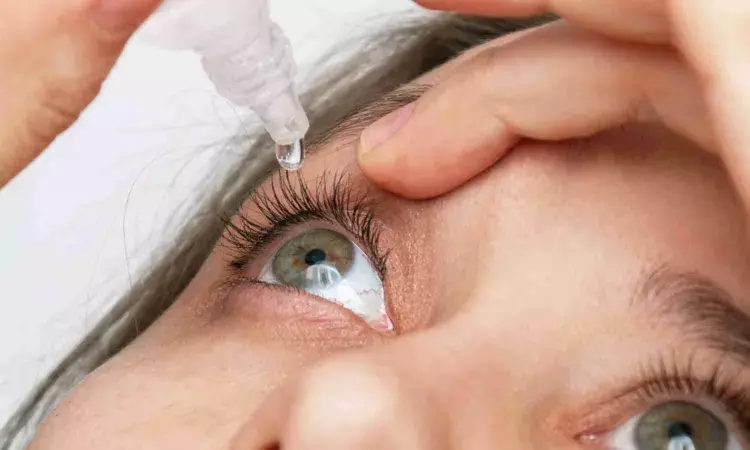- Home
- Medical news & Guidelines
- Anesthesiology
- Cardiology and CTVS
- Critical Care
- Dentistry
- Dermatology
- Diabetes and Endocrinology
- ENT
- Gastroenterology
- Medicine
- Nephrology
- Neurology
- Obstretics-Gynaecology
- Oncology
- Ophthalmology
- Orthopaedics
- Pediatrics-Neonatology
- Psychiatry
- Pulmonology
- Radiology
- Surgery
- Urology
- Laboratory Medicine
- Diet
- Nursing
- Paramedical
- Physiotherapy
- Health news
- Fact Check
- Bone Health Fact Check
- Brain Health Fact Check
- Cancer Related Fact Check
- Child Care Fact Check
- Dental and oral health fact check
- Diabetes and metabolic health fact check
- Diet and Nutrition Fact Check
- Eye and ENT Care Fact Check
- Fitness fact check
- Gut health fact check
- Heart health fact check
- Kidney health fact check
- Medical education fact check
- Men's health fact check
- Respiratory fact check
- Skin and hair care fact check
- Vaccine and Immunization fact check
- Women's health fact check
- AYUSH
- State News
- Andaman and Nicobar Islands
- Andhra Pradesh
- Arunachal Pradesh
- Assam
- Bihar
- Chandigarh
- Chattisgarh
- Dadra and Nagar Haveli
- Daman and Diu
- Delhi
- Goa
- Gujarat
- Haryana
- Himachal Pradesh
- Jammu & Kashmir
- Jharkhand
- Karnataka
- Kerala
- Ladakh
- Lakshadweep
- Madhya Pradesh
- Maharashtra
- Manipur
- Meghalaya
- Mizoram
- Nagaland
- Odisha
- Puducherry
- Punjab
- Rajasthan
- Sikkim
- Tamil Nadu
- Telangana
- Tripura
- Uttar Pradesh
- Uttrakhand
- West Bengal
- Medical Education
- Industry
Ophthalmic EDTA Solution Improves Visual Function in Early-Stage Cataract Patients: Study

A recent subgroup analysis published in the American Journal of Ophthalmology revealed promising results for a novel topical treatment to improve visual function in patients with early-stage age-related cataracts. The study explored the efficacy of a 2.6% EDTA ophthalmic solution (C-KAD) by specifically focusing on its ability to improve the contrast sensitivity (CS) that deteriorates in the early stages of cataract development.
This multicenter phase 1/2 clinical trial included a total of 41 eyes from subjects who had mesopic contrast sensitivity scores between 1 and 7 grating patches at baseline which indicates mild to moderate loss of CS. These subjects were part of the intent-to-treat population in the original trial. The primary objective of this study was to determine the proportion of eyes showing clinically significant improvements in mesopic CS, defined as an improvement of 0.30 logCS or greater, equivalent to a 100% improvement in CS, at two or more spatial frequencies.
The results of this analysis found 66.7% of the eyes treated with C-KAD to demonstrate significant mesopic CS improvements by Day 120, when compared to only 35.0% in the placebo group (P = .043). This finding not only met the primary endpoint but also highlighted the potential of C-KAD as a noninvasive pharmacological treatment for early-stage cataract patients.
Further analysis showed that the proportion of eyes achieving significant improvements in the area under the log contrast sensitivity function (AULCSF) was also significantly higher in the C-KAD group (42.9%) when compared to the placebo group (15.0%, P = .050). The mean change in AULCSF was markedly larger in the C-KAD group, with an average improvement of 0.25 logCS versus just 0.06 logCS in the placebo group (P = .020). Also, C-KAD showed significant improvements in mesopic CS at specific spatial frequencies, particularly at 3 cycles per degree (cpd) and 6 cpd. The mean CS improvements at these frequencies were 0.28 logCS (P = .004) and 0.31 logCS (P = .047), respectively by further highlighting the efficacy of the treatment.
Exploratory outcomes, such as best-corrected visual acuity (BCVA) and lens density changes, were also examined in a smaller subset of eyes. Positive trends in BCVA and statistically significant reductions in lens density were observed in the C-KAD group which suggests additional benefits beyond CS improvement. Overall, the study unveiled that C-KAD offers a significant improvement in visual function and quality of vision for patients with early-stage cataracts.
Source:
KUBOI, T., CHUCK, R. S., PINEDA, R., II, BHUSHAN, R., GOSWAMY, A., & OLSON, R. J. (2024). Subgroup Analysis from a Phase 1/2 Randomized Clinical Trial of 2.6% EDTA Ophthalmic Solution in Patients with Age-Related Cataract. In American Journal of Ophthalmology (Vol. 268, pp. 155–164). Elsevier BV. https://doi.org/10.1016/j.ajo.2024.07.038
Neuroscience Masters graduate
Jacinthlyn Sylvia, a Neuroscience Master's graduate from Chennai has worked extensively in deciphering the neurobiology of cognition and motor control in aging. She also has spread-out exposure to Neurosurgery from her Bachelor’s. She is currently involved in active Neuro-Oncology research. She is an upcoming neuroscientist with a fiery passion for writing. Her news cover at Medical Dialogues feature recent discoveries and updates from the healthcare and biomedical research fields. She can be reached at editorial@medicaldialogues.in
Dr Kamal Kant Kohli-MBBS, DTCD- a chest specialist with more than 30 years of practice and a flair for writing clinical articles, Dr Kamal Kant Kohli joined Medical Dialogues as a Chief Editor of Medical News. Besides writing articles, as an editor, he proofreads and verifies all the medical content published on Medical Dialogues including those coming from journals, studies,medical conferences,guidelines etc. Email: drkohli@medicaldialogues.in. Contact no. 011-43720751


